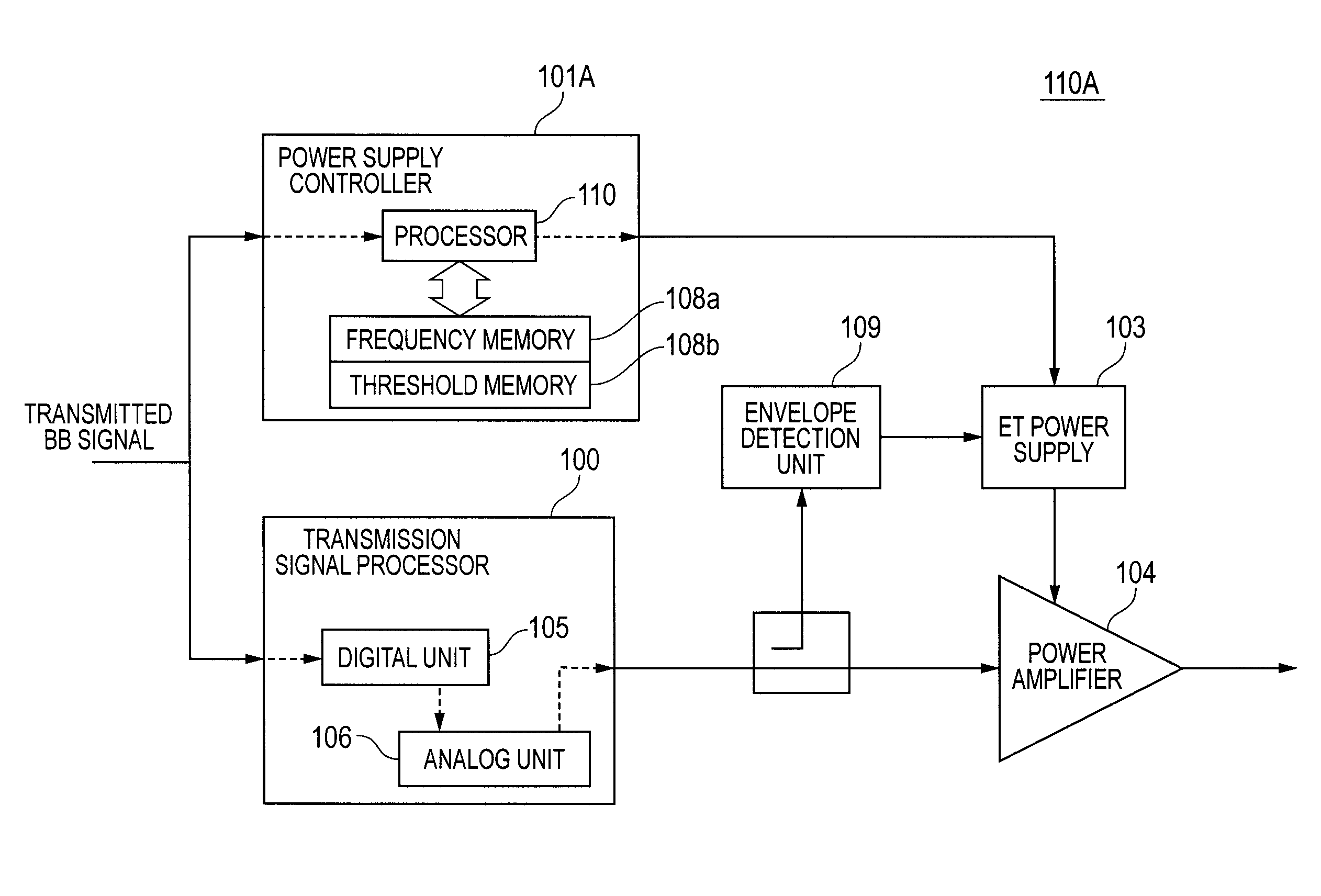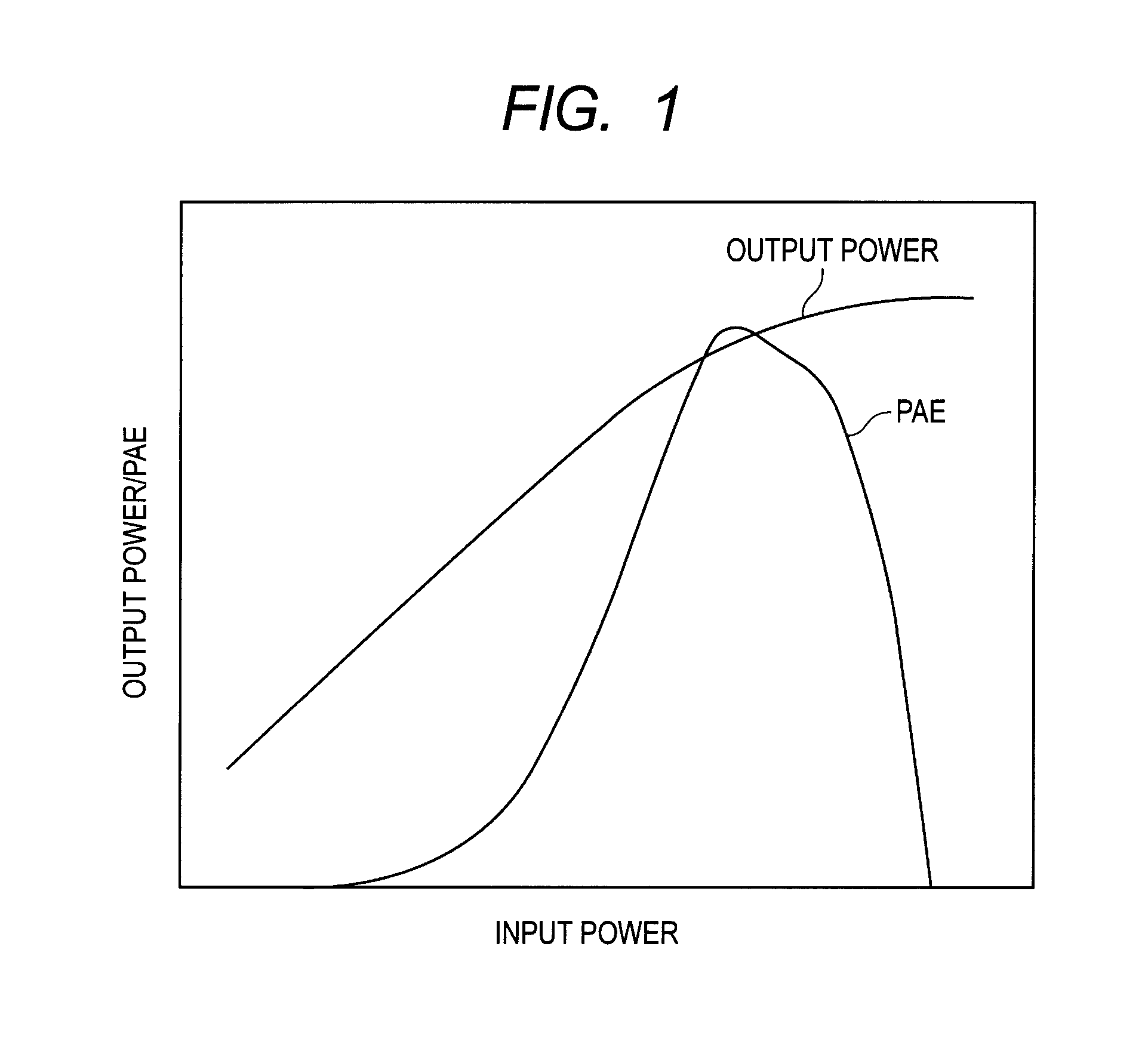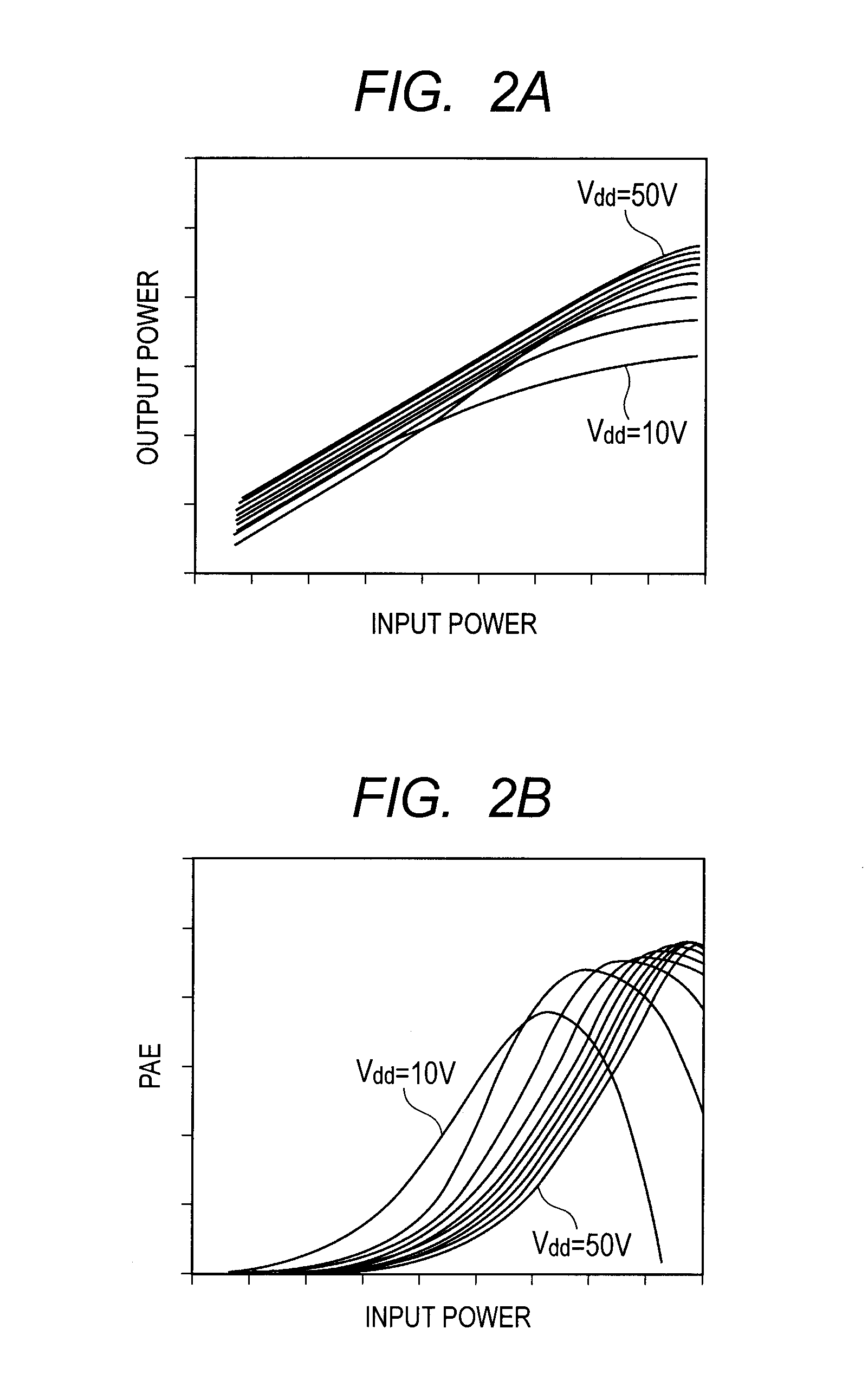Radio transmitter and envelope tracking power supply control method
a technology of power supply control and radio transmitter, which is applied in the direction of amplifiers, antennas, electricly long antennas, etc., can solve the problems of power difference and large difference in occurrence probability of digitally modulated waves, and achieve the effect of higher pa
- Summary
- Abstract
- Description
- Claims
- Application Information
AI Technical Summary
Benefits of technology
Problems solved by technology
Method used
Image
Examples
first embodiment
[0045]The configuration of a radio transmitter will be described with reference to FIG. 7. Note that the operation principal of an ET power supply is as described above, and the description thereof will be omitted. In FIG. 7, a radio transmitter 110 includes a transmission signal processor 100, a power supply controller 101, an ET power supply 103, a power amplifier 104, and an envelope detection unit 109. The transmission signal processor 100 includes a digital unit 105 and an analog unit 106. The power supply controller 101 includes a memory 108 and a function generator 107.
[0046]The digital unit 105 receives a transmitted base band (BB) signal that is transmitted from the upper device. The digital unit 105 sets the transmission power, the transmission frequency, the number of transmission carriers and the like, and transmits them to the analog unit 106. The analog unit 106 converts the BB signal received from the digital unit 105 into an analog high frequency signal. Then, the an...
second embodiment
[0057]A second embodiment is designed to improve the PAE by further reducing the output dynamic range required by the ET power supply by combining with PFR. Note that the configuration shown in FIGS. 7 and 8 are used also in the second embodiment. However, a PFR processor (not shown) is implemented in the digital unit 105 within the transmission signal processor 100. The other operations are the same as those in the first embodiment.
[0058]The probability density distribution in PFR process will be described with reference to FIG. 12. In FIG. 12, the vertical axis represents the probability density and the horizontal axis represents the signal power. As a result of the PFR process, the upper limit of the signal power appears, and the probability density in the vicinity of the upper limit increases. When the PFR process is performed, the maximum value of the signal input to the power amplifier 104 is reduced. This phenomenon will be described with reference to FIG. 9. The maximum valu...
third embodiment
[0061]A radio transmitter according to a third embodiment will be described with reference to FIGS. 14 to 19. The radio transmitter of the first and second embodiments assumes the Rayleigh distribution as the transmission output distribution. However, the radio transmitter according to the third embodiment measures the transmission output distribution to control the ET power supply.
[0062]The configuration of the radio transmitter will be described with reference to FIG. 14. In FIG. 14, a radio transmitter 110A includes a transmission signal processor 100, a power amplifier 104, an ET power supply 103, an envelope detection unit 109, and a power supply controller 101A. The transmission signal processor 100 includes a digital unit 105 and an analog unit 106. The power controller 101A includes a processor 110 and a memory 108. Further, the memory 108 includes a frequency memory 108a and a threshold memory 108b.
[0063]The threshold memory 108b stores a plurality of thresholds which are ...
PUM
 Login to View More
Login to View More Abstract
Description
Claims
Application Information
 Login to View More
Login to View More - R&D
- Intellectual Property
- Life Sciences
- Materials
- Tech Scout
- Unparalleled Data Quality
- Higher Quality Content
- 60% Fewer Hallucinations
Browse by: Latest US Patents, China's latest patents, Technical Efficacy Thesaurus, Application Domain, Technology Topic, Popular Technical Reports.
© 2025 PatSnap. All rights reserved.Legal|Privacy policy|Modern Slavery Act Transparency Statement|Sitemap|About US| Contact US: help@patsnap.com



